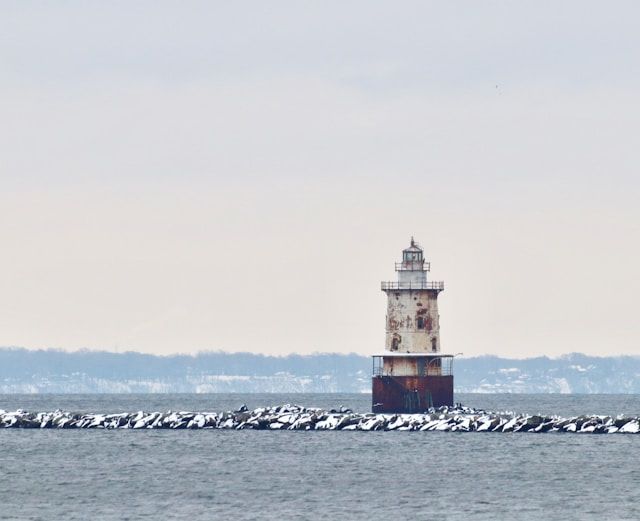The British Raid on Essex stands as one of the most destructive maritime actions in Connecticut’s history, yet remains largely unknown to many Americans. On April 7-8, 1814, a daring British force of 136 Royal Marines and sailors journeyed up the Connecticut River and launched a surprise attack on American vessels anchored near the town then known as Pettipaug. The raid resulted in the single greatest loss of American shipping during the entire War of 1812, with numerous privateers and merchant vessels destroyed, dealing a significant blow to both local commerce and the American war effort.
Visitors to modern-day Essex can explore this fascinating chapter of history where British forces strategically targeted this Connecticut River shipbuilding center. The town’s proximity to Long Island Sound made it an important maritime hub, but also left it vulnerable to British naval operations. Despite its historical significance, the raid faded into what author Jerry Roberts describes as “obscurity and folklore” until recent research efforts brought this “Forgotten Battle” back into public awareness.
Get a discount of 15% to 70% on accommodation in Connecticut! Look for deals here:
Connecticut Hotels, Apartments, B&Bs
Connecticut history enthusiasts will be captivated by the strategic importance of this raid, which demonstrated Britain’s determination to cripple American maritime capabilities during the conflict. The attack wasn’t random – the coves around Pettipaug were specifically chosen for their shipbuilding activities, marking it as a calculated military operation rather than a simple act of destruction. Today, Essex offers visitors a chance to walk the same riverbanks where this dramatic chapter of the War of 1812 unfolded, connecting them directly to an overlooked piece of American history.
Context and Prelude to the Raid
The British raid on Essex represented a calculated attempt to disrupt American maritime activities during the War of 1812. It targeted a strategic shipbuilding center that had become a haven for privateers operating against British shipping interests.
The Strategic Role of Essex in the War of 1812
Essex, then known as Pettipaug, held significant importance during the War of 1812 due to its location on the Connecticut River. This small Connecticut town had become a vital shipbuilding center with protected coves that offered ideal conditions for constructing vessels.
The town’s strategic position—six miles upriver from Long Island Sound—provided natural protection from British naval forces that regularly patrolled coastal waters. Essex’s sheltered harbor allowed American privateers to prepare for missions while remaining relatively safe from detection.
By 1814, Essex had developed into one of Connecticut’s most productive maritime centers. The town’s shipyards were actively building and outfitting privateers that would venture out to capture British merchant vessels, making it an increasingly valuable target for British forces looking to diminish American naval capabilities.
Privateers and Naval Warfare on the Long Island Sound
Privateers from Essex played a crucial role in America’s naval strategy during the War of 1812. These privately owned vessels carried government commissions authorizing them to capture enemy merchant ships for profit.
The British navy’s blockade of Long Island Sound had nearly halted regular commerce in the region. In response, American privateers from ports like Essex became essential for maintaining some level of maritime activity and causing economic damage to British interests.
These swift vessels would slip past the blockade to raid British shipping lanes, capturing valuable cargo and disrupting supply lines. The success of Essex-based privateers had become particularly troublesome for British naval commanders by early 1814, with numerous reports of captures reaching London.
British intelligence had identified Pettipaug as a source of these privateers. Several vessels built in Essex had proven especially effective at evading British warships and capturing merchant vessels.
British Naval Tactics and Objectives
The British Royal Navy developed specific tactics to counter American privateering operations along the Connecticut coast. Their primary objective was to eliminate the threat posed by American raiders disrupting their commerce.
By 1814, British commanders had implemented a more aggressive strategy that included targeted raids on privateering bases. Rather than simply maintaining the blockade, they began planning precision strikes against locations where privateers were built, outfitted, or harbored.
The raid on Essex was not a random attack but a carefully planned operation. Intelligence reports had identified the town as housing several privateers and vessels under construction that posed a threat to British shipping interests.
The British assembled a force of 136 Royal Marines and sailors from vessels anchored offshore. Their mission was clear: navigate upriver under cover of darkness and destroy as many vessels as possible to eliminate the privateering threat from Essex.
Aftermath and Historical Significance
The British raid on Essex during the War of 1812 left a lasting imprint on both the local community and American maritime history. The attack resulted in significant economic damage and represented one of the most substantial shipping losses of the entire conflict.
Consequences for the Local Economy and Shipping Industry
The raid devastated the local economy and nearly ruined many businesses in Essex. Before the attack, Essex (then known as Pettipaug) was a thriving shipbuilding center and maritime hub on the Connecticut River.
The destruction of numerous vessels crippled the town’s shipping industry, which had been a primary source of income and employment for local residents. Many shipbuilders and merchants faced financial ruin, unable to recover from such substantial losses.
Recovery proved slow and difficult. The timing was particularly devastating as it occurred during the larger context of the British naval blockade, which had already placed significant pressure on American coastal communities.
Capture and Surrender of American Vessels
During the raid, British forces captured or destroyed approximately 27 American vessels, representing the single greatest loss of American shipping during the entire War of 1812. These included privateers, merchant ships, and vessels under construction.
Most ships surrendered without significant resistance, as the British attack caught the town by surprise. The raid was methodically executed under cover of darkness, with British forces rowing up the Connecticut River undetected.
The seized vessels represented not just monetary value but also critical maritime infrastructure that took years to replace. Detailed maps later revealed the strategic planning behind the British attack, showing how thoroughly they had scouted the river approaches to Essex.
Legacy and Commemoration of the Essex Raid
Today, the Essex raid is commemorated as a significant event in Connecticut history. The Connecticut River Museum in Essex features exhibits about the raid, including archaeological finds recovered from the attack sites.
The “Privateers of Pettipaug” have become part of local lore, with annual historical reenactments taking place to educate visitors about this pivotal moment. These events draw history enthusiasts to Essex, helping modern visitors understand the town’s maritime heritage.
Published works, including those from Wesleyan University Press, have documented new information about the raid, revealing previously unknown details about participants and outcomes. The Connecticut Gazette accounts from the period provide valuable contemporary perspectives on how residents experienced and understood the attack.
The raid’s story showcases Essex’s resilience and deep connection to America’s maritime past, making it an essential stop for anyone interested in War of 1812 history.
Get a discount of 15% to 70% on accommodation in Connecticut! Look for deals here:
Connecticut Hotels, Apartments, B&Bs








